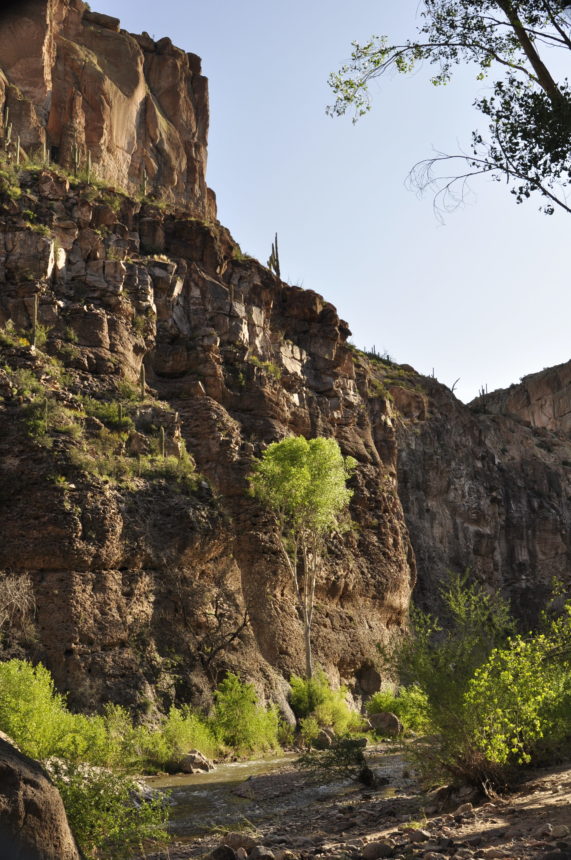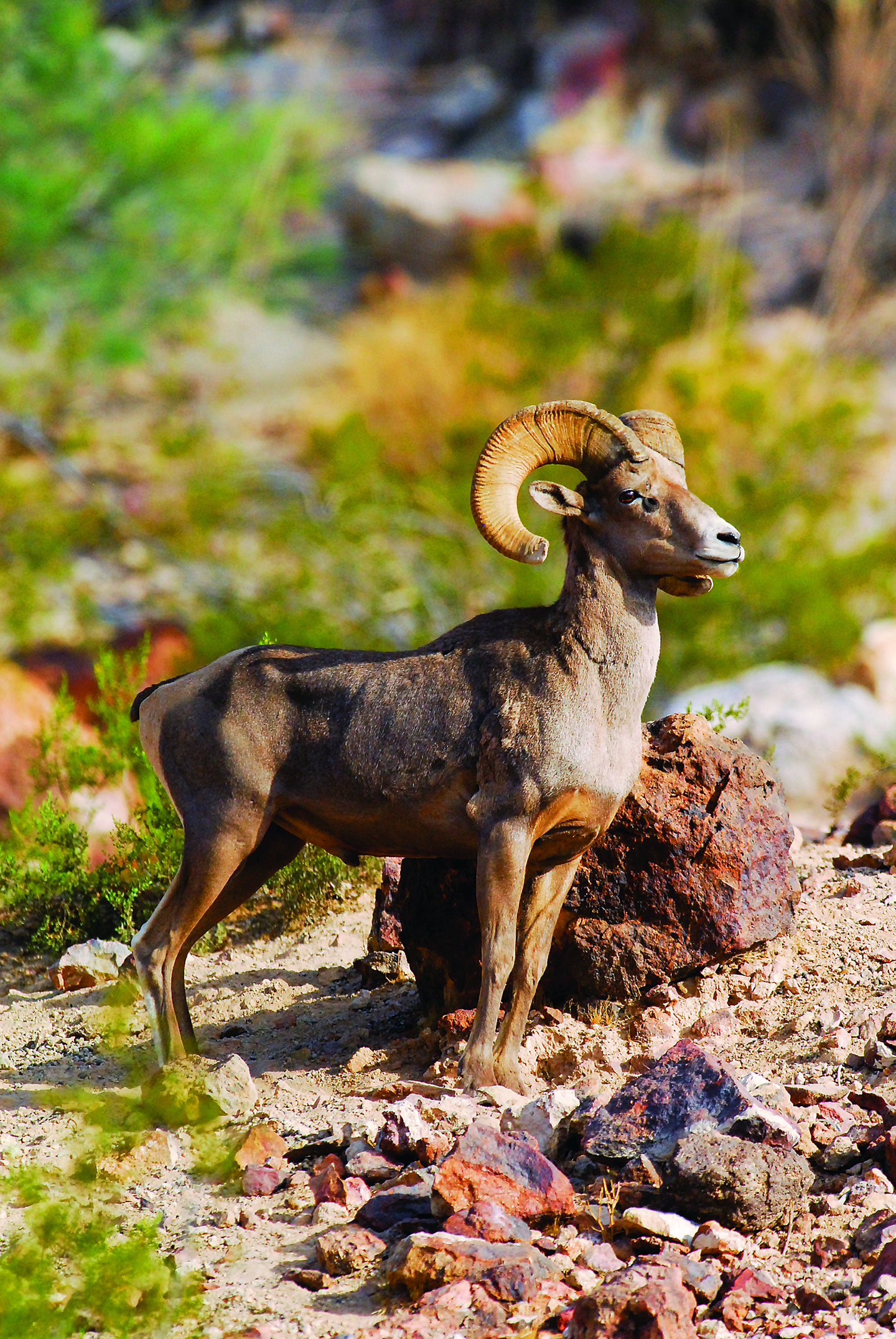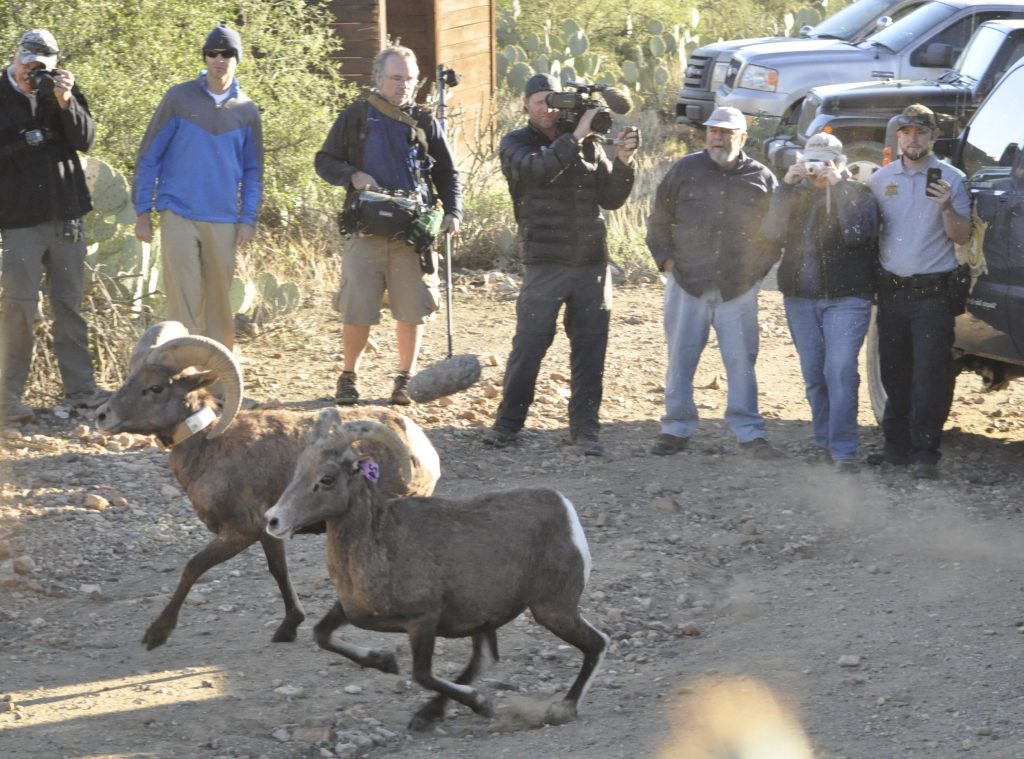The gates opened, cameras clicked and 11 desert bighorn sheep jumped to freedom. Within seconds, they had vanished into the rocky, saguaro-studded slopes of the Galiuro Mountains in southern Arizona’s Aravaipa Canyon Wilderness.
As they sped away into the wild desert landscape, I thought, “sorry guys for the disruption, but you’re gonna love this place.”

The sheep had been captured the day before in the Silver Bell Mountains northwest of Tucson, and transported 130 miles to the Conservancy’s Aravaipa Canyon Preserve. Now they were bounding into bighorn nirvana, up the craggy, 1,000-foot tall slopes of the canyon. The Apaches named this place Aravaipa, which means Land of Laughing Waters, because of the shimmering stream that flows year-round through the 10-mile long canyon.
Meanwhile, about 25 miles south of Aravaipa, in the southern Galiuros, another 20 of the bighorns captured from the Silver Bells the day before were also being released. No doubt they were at this minute scrambling up the red walls of Redfield Canyon in the Muleshoe Ranch Cooperative Management Area.
Both groups of bighorns are intended to augment the existing two herds in the Galiuro Mountain complex, which is the wildest, most remote area of Arizona, outside of the Grand Canyon.
Saving Desert Bighorns
Capture and relocation is no doubt stressful for the animals, but necessary for their long-term survival. Without relocation efforts to balance and support the surviving herds, desert bighorn populations will likely continue to decline.
Desert bighorns, like their cousins, the larger Rocky Mountain bighorns, have been on the decline over the last century due to human development, competition with livestock for food and water, and exposure to livestock parasites and diseases.
Approximately 1.5 million to 2 million bighorn sheep lived in North America at the beginning of the 19th century. Now they live on only 4 percent of their historic ranges. Today the overall population of bighorn sheep is about 25,000, with the desert bighorn sheep numbering around 4,000, mostly in the Mojave and Sonoran Deserts of California and Arizona, respectively.
Arizona’s Silver Bell Mountains – where today’s relocated sheep came from – is a relatively small, isolated mountain range with a large number of sheep for its size – about 175. Reducing this herd size will help reduce stress and disease potential, says the Conservancy’s Ron Day, who spent many years with the Arizona Game and Fish Department working with large mammals.
On the other hand, the two existing bighorn herds in the much larger Galiuro Mountain complex are small – an estimated 150 sheep — having declined over the last century due to habit degradation and livestock conflicts. Without new blood, these bighorn herds would become inbred. This relocation is meant to augment these populations and enhance their genetic diversity.
Fire for Life
The Conservancy’s efforts to protect this landscape over the last four decades bodes well for the bighorns. But just as important for bighorn survival is fire. Regular fires on the landscape keep shrubs at bay – important for bighorns whose most important asset is their keen eye-sight. One of the main keys to bighorn survival is their ability to move to food and water without sacrificing security. They like open terrain where they can see predators such as mountain lions.
The Nature Conservancy noted fire’s beneficial effects in the mid-90s, when it collaborated with public land managers on a large landscape fire plan that has led to natural and controlled burns.
After a controlled burn on the Aravaipa Canyon rim in 2015, bighorns were immediately attracted to the fresh grass shoots of the newly burned areas. In 2016, the Conservancy and partners burned 22,000 acres on the Muleshoe Ranch as part of a long-term plan to burn 137,000 acres over the next nine years.

These burns have not only benefitted bighorns, but many other wildlife species. Even native fish have benefitted; fires stimulate the growth of grass which provides shady overhangs and reduces soil runoff into the streams.
All this burning could help re-unite the two populations of bighorns in the Galiuros. GPS-enabled collars put on some of the relocated sheep will help scientists track this process, and should provide clues on where more burning would be advantageous.
What happens next with the relocated bighorns?
They’ll explore, looking for water, food and protection. And of course, they’ll keep a watchful eye out for predators. At this time of year, the sheep have probably mated. Lambs will be born in the spring, though only about one-third of the lambs generally survive to adulthood.
And maybe, the two herds will re-connect, using their unique skills to leap from one craggy ledge to another, and live out their days in the wild Land of Laughing Waters.




Are there any projects you could use help with? My son is an Eagle scout and is looking for a project that has something to do with forests in Arizona.
Hi Karen, Thank you for your interest. I suggest contacting the volunteer coordinator in Arizona to see what opportunities they have for an Eagle Scout project (contact info at the end of this page): https://www.nature.org/ourinitiatives/regions/northamerica/unitedstates/arizona/volunteer/index.htm
Proud to working with TNC’s Ron Day on prescribed burns on Forest Service (Cornado National Forest) lands in the remainder of the Galiuro Mountains!
Cattle/ranchers are the biggest enemy of our wild flora and fauna…and for many reasons, enough to write a book! It’s way past time to take these invasive, non-indigenous, destructive creatures off public land! You just can’t have ranchers calling the shots, as what they have been doing for generations. Game & Fish as well as conservationists have been trying to undo the destruction ranchers and cattle have been doing. Does this make any sense? Grow some fortitude and rein those ranchers/cowboys in!!!
Such a wonderful project to accomplish for these wonderful majestic iconic animals. They are very noble looking.